 |
 |
 |
| |
ANGIOGENIC FACTORS IN RNA-SEQ OF SKIN AND GASTROINTESTINAL KAPOSI SARCOMA LESIONS
|
| |
| |
CROI 2022 Feb 11-16
Ramya Ramaswami1, Takanobu Tagawa1, Anna Serquina1, Guruswamy Mahesh1, Xiaofan Li1, Vishal Koparde1, Kathryn Lurain1, Ralph Mangusan1, Anaida Widell1, Irene Ekwede1, Laurie T. Krug1, Robert Yarchoan1, Joseph Ziegelbauer1
1National Cancer Institute, Bethesda, MD, United States
Background:
Kaposi sarcoma (KS), caused by Kaposi sarcoma herpesvirus (KSHV), is a multicentric tumor characterized by abnormal vasculature and proliferation of KSHV-infected spindle cells. KS involves the skin but can also affect the gastrointestinal tract (GI) in severe cases.
Methods:
Here, we performed RNA sequencing of skin and GI KS lesions from participants with KS to understand the similarities and differences in the gene expression pattern. We obtained skin and GI KS lesions with matched normal skin and GI samples. Differential gene expression was measured by comparing KS lesions to normal matched samples. Twenty-two paired samples of KS and normal tissue were obtained (skin (10 pairs) and GI (12 pairs)) from 19 participants with KS,17 participants with concurrent HIV infection. All tumors were stage T1. Seven paired samples were from participants who had received prior KS therapy.
Results:
In skin KS, cellular gene networks associated with cell adhesion (extracellular matrix), immune response, angiogenesis, and hypoxia were dysregulated when compared with normal skin. There were 25 human genes increased and one decreased in both skin and GI KS lesions. Of these genes, one of particular interest clinically was FLT4, which encodes for a receptor of VEGF-C and VEGF-D. Another gene, STC1, was strongly increased in skin KS lesions, GI KS lesions, and upon laboratory infection of primary endothelial cells with KSHV. We found repression of STC1 and FLT4 inhibited angiogenesis in primary human dermal lymphatic endothelial cells. Infection of these cells with KSHV increased angiogenesis. In participants that shared both skin and GI KS (with matched normal samples), we identified specific genes that were strongly increased in both tissues. Our analysis of KSHV gene expression patterns in KS lesions found abundant expression of certain lytic genes, unexpectedly in the absence of many other lytic genes. KSHV gene expression patterns in KS lesions differed from laboratory infection of endothelial cells with KSHV. Last, KSHV gene expression and IL6 expression strongly correlated in skin KS, but not GI KS lesions.
Conclusion:
This is one of the first studies comparing skin and GI KS that highlights differences in viral gene and clinically relevant host gene expression between these tissues. This analysis may lead to improved diagnosis and understanding of KSHV.

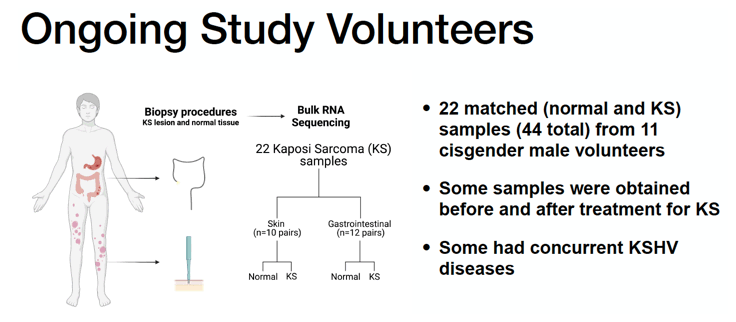

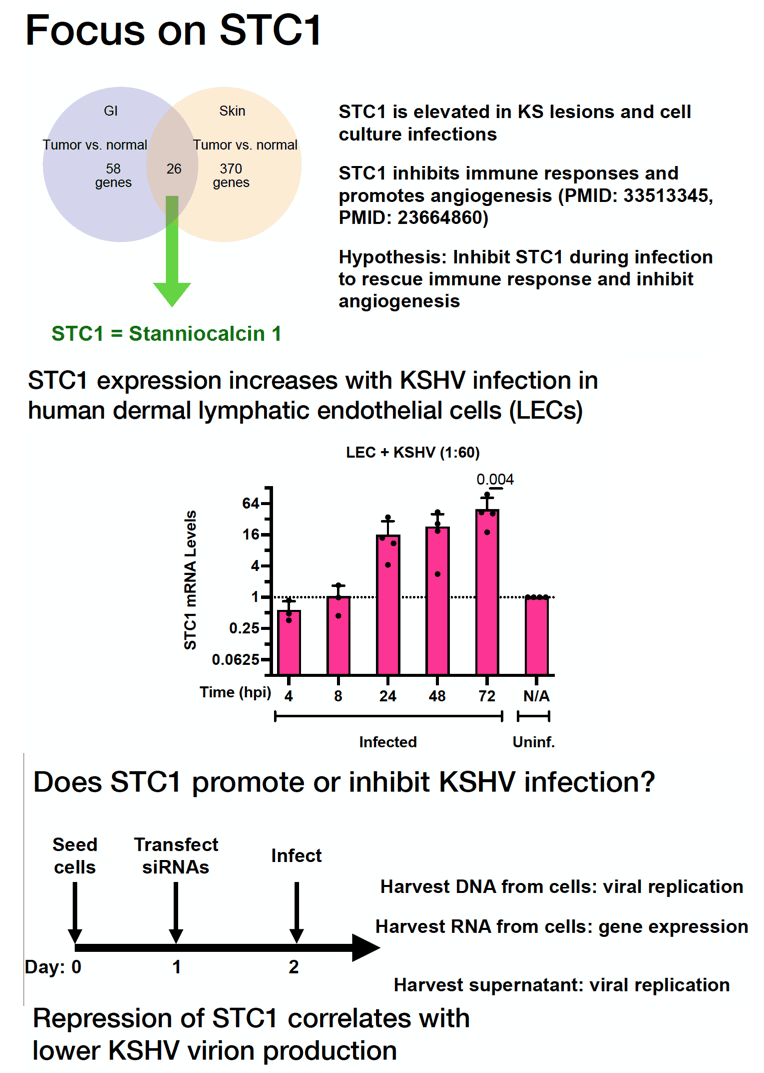
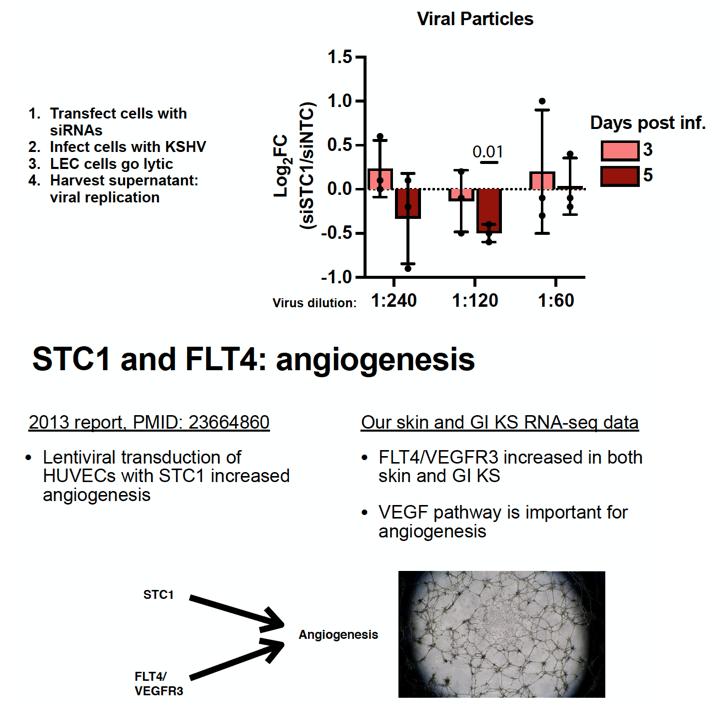
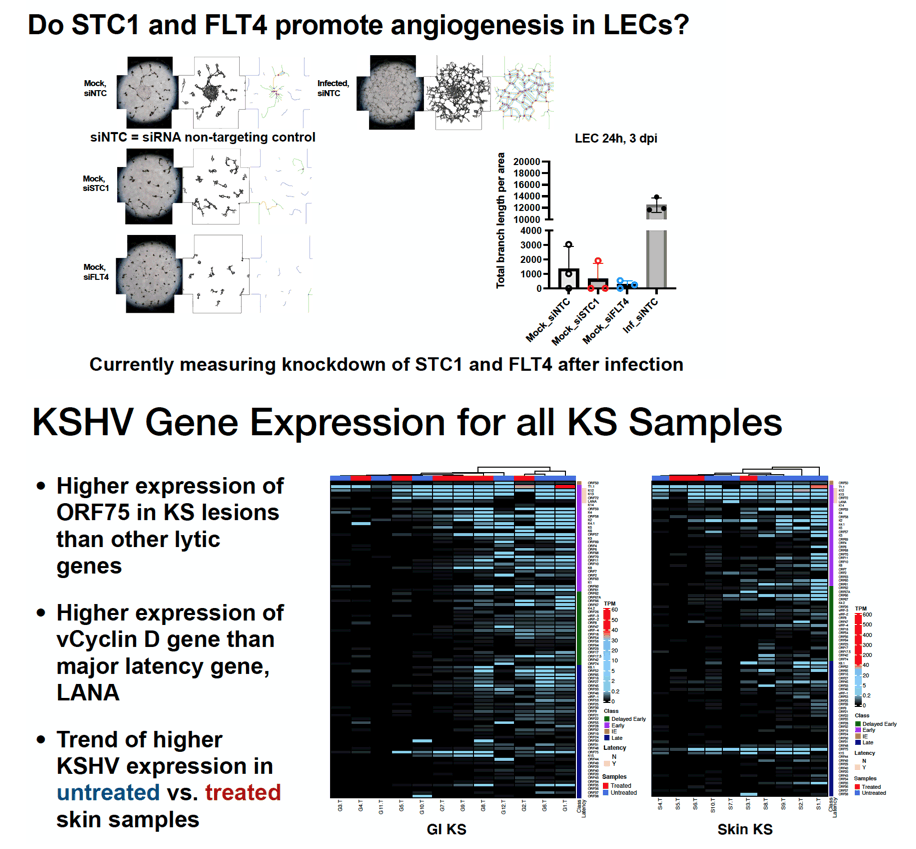
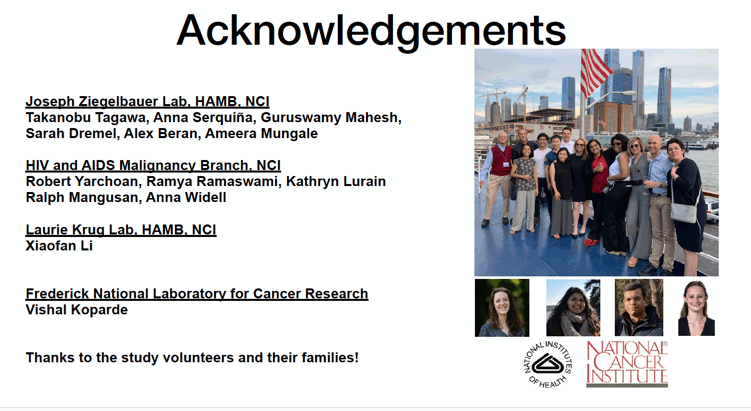
|
| |
|
 |
 |
|
|